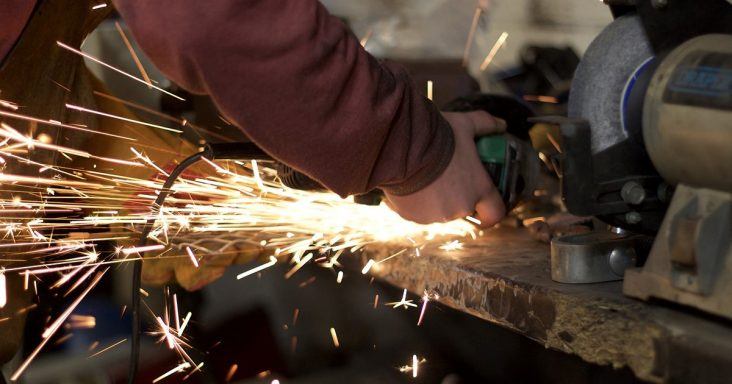Manufacturing, overall economy softens in January
by February 2, 2023 10:15 am 599 views

Economic activity in the U.S. manufacturing sector moderated for the third consecutive month, while the overall economy contracted for the second month in a row in January, according to the Institute for Supply Management (ISM).
ISM released Wednesday (Feb. 1) the January Manufacturing ISM Report on Business that shows the purchasing managers’ index (PMI) declined by 1 percentage point to 47.4% from December. A reading below 50% indicates the manufacturing sector is contracting, while a reading below 48.7% indicates the overall economy is contracting.
“The past relationship between the Manufacturing PMI and the overall economy indicates that the Manufacturing PMI for January (47.4%) corresponds to a -0.5% change in real gross domestic product (GDP) on an annualized basis,” said Timothy Fiore, chair of the ISM Manufacturing Business Survey Committee.
According to the January report, new orders and production contracted. Backlogs contracted. Supplier deliveries accelerated. Raw materials inventories increased. Customers’ inventories were too low. Prices declined. Exports and imports fell.
“The U.S. manufacturing sector again contracted, with the Manufacturing PMI at its lowest level since the coronavirus pandemic recovery began,” Fiore said. “With Business Survey Committee panelists reporting softening new order rates over the previous nine months, the January composite index reading reflects companies slowing outputs to better match demand in the first half of 2023 and prepare for growth in the second half of the year.”
The report shows that panelists’ companies do not plan to reduce headcounts substantially because they are positive about the second half of the year.
“New order rates remain depressed due to buyer and supplier disagreements regarding price levels and delivery lead times,” Fiore said. “These should be resolved by the second quarter. In the meantime, panelists’ companies are attempting to maintain head-count levels during the anticipated slow first half in preparation for a strong performance in the second half of 2023. Eighty-six percent of manufacturing gross domestic product (GDP) is contracting, up from 85% in December. However, 26% of sector industries had a composite PMI calculation of below 45% in January (a stronger indication of industry sluggishness), down from 35% the previous month.”
The following two manufacturing industries reported growth in January: Miscellaneous manufacturing and transportation equipment.
According to the report, multiple respondents reported easing prices and softening demand. Still, some industries are noting business strength.
In the computer and electronic products industry, a respondent said, “business is still strong, but we have begun to see softening in some pricing. And lead times seem to be improving.”
A respondent in the chemical products industry said, “conditions are reasonable. Sales are a little better than planned. Cost pressures are easing for most products. There have been a lot fewer supply disruptions so far this year, and few are expected in the short term. The crystal ball remains a little blurry for the rest of 2023.”
In the food, beverage and tobacco products industry, a respondent said, “sales have dropped (as expected) at the beginning of the year. The forecast from the sales department is showing even lower sales than we expected. If this holds true, inventory levels will rise slightly over the next month and a half.”
A respondent in the transportation equipment industry said, “supply chain issues continue to plague our production schedules. Transportation from our overseas suppliers is also contributing to delays. Lead times have doubled for critical electronics, gaskets, sealants and specialized steel.”
A machinery industry respondent said, “strong ag demand continues to drive heightened demand for parts. Large construction/off-highway original equipment manufacturers have strong demand as well. Creating continued capacity constraints with the supply base.”
In the electrical equipment, appliances and components industry, a respondent noted some business segment demand is softening globally. But lead times for many materials have improved, and costs have moderated.
A respondent in the fabricated metal products industry said, “the outlook for the first half of 2023 looks very soft. Demand for our products has taken a sharp downward turn. Our inventories are high as well as our customers’. It seems everyone is bracing for a recession.”
A miscellaneous manufacturing respondent said, “customers are being quite aggressive in pursuing price decreases, far beyond the price relief we are actually receiving from our suppliers.”
A primary metals industry respondent said new orders have moderated recently, while a respondent in the nonmetallic mineral products industry said, “industrial construction is strong. Commercial construction is slower.”
